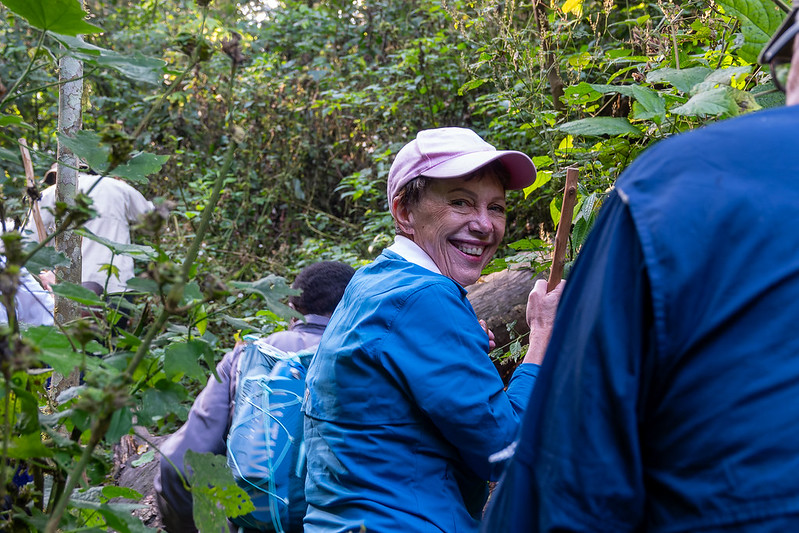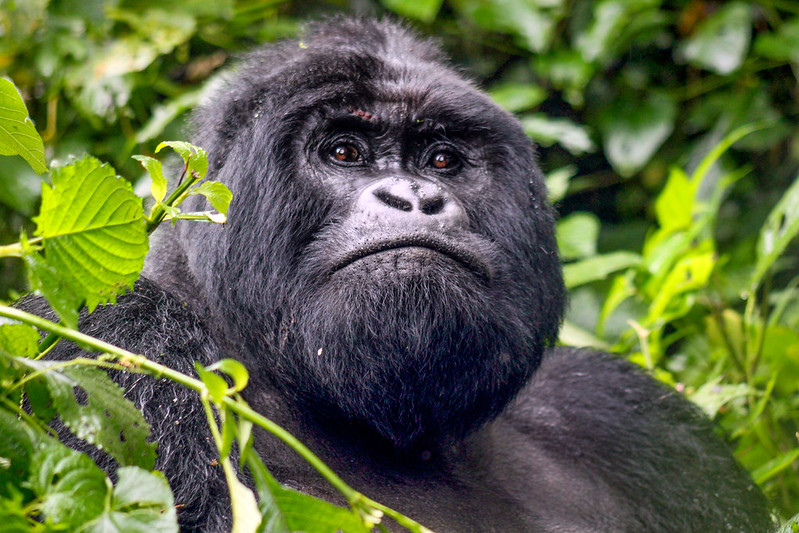Gorillas are only native to Africa, living in a number of countries across the continent. Western gorillas are found in Nigeria, Cameroon, Central African Republic, Equatorial Guinea, Gabon, Republic of Congo (DRC), Angola. Eastern gorillas live in the Democratic Republic of Congo (DRC), Uganda and Rwanda. Tourists can go on gorilla treks in DRC, Uganda and Rwanda.

Gorilla Species
Eastern and western gorillas are categorised into subspecies. We'll briefly talk about each below, but Eastern mountain gorillas are the species that most people want to visit. It is important to know the difference gorilla species when you are planning your gorilla adventure.
Eastern gorillas
Mountain gorillas are found in the high-altitude forests of Rwanda, Uganda and the Democratic Republic of the Congo (DRC). This is the species that most people want to visit because of their size and because they are the easiest to reach. Mountain gorillas are also very rare, with just over 1,000 remaining in the wild. They have much darker, longer and thicker fur to protect them from extreme temperatures of the high-altitude forests they call home.
Eastern lowland gorillas have lighter fur that is shorter and thinner than their mountain-dwelling counterparts, as they live in warmer climates across a larger part of East Africa. The eastern lowland gorilla is the largest of all gorilla species and can only be found in the DRC. It is distinguished from other gorillas by its stocky body, large hands and short muzzle. Trekking with lowland gorillas can be a challenging endeavour, as they travel long distances in search of food and shelter. This makes them harder to track.

Western gorillas
There are also two subspecies of western gorilla. Western lowland gorillas, found in Cameroon & Republic of Congo, can also be distinguished from other gorilla subspecies by their wider skulls, more pronounced brow ridges, slightly smaller size, and their brown-gray coats and auburn chests. Western lowland gorillas are the most abundant of all gorilla species. Meanwhile, cross river gorillas, found in Nigeria and Cameroon, are the smallest of all gorilla subspecies, with less hair around their faces. Even though they’re small by gorilla standards, an adult can still weigh up to 200kg!
Gorillas and their ecological importance to the environment
Gorillas play a vital role in the ecological makeup of Central Africa’s rainforests, but their populations are dwindling due to a number of threats. Over the years, habitat destruction has had a catastrophic effect on the wild gorilla population. Poaching has also decimated gorilla numbers, while human interaction in search of resources and agricultural land has introduced new diseases to gorilla populations. Recently, the threat of COVID-19 to these wild populations has pushed gorilla tour operators to bolster safety precautions, which overall has been a good thing for reducing the risk of human passing diseases to gorillas. Tourism has played a vital role in the conservation of mountain gorillas and our hope is that we can continue to use tourism to educate locals and tourists about these incredible creatures.
The history of gorilla trekking and tourism
The history of gorilla trekking dates back to the early 1900’s, with the establishment of Virunga National Park in 1925 as Africa’s first national park. Virunga is found in the Democratic Republic of Congo (DRC), on the border of Rwanda and Uganda in is as important to Africa as the Amazon is important to South America. Little was known about gorillas throughout the majority of the early 1900’s, until American Zoologist George Schaller’s ground-breaking research into the minds and behaviors of the primates in 1959 provided an early window into the lives of gorillas. In 1963, Schaller’s publication The Mountain Gorilla: Ecology and Behavior offered the public an insight into the intelligence of gorillas and helped to bust myths about the ferocity of these gentle giants.
In 1973, tourism first began to play an integral role in gorilla conservation, with the first gorilla trekking experience introduced at DRC’s Kahuzi-Biega National Park. By 1979, the Rwandan Government moved to form multiple private nature conservation organisations, a step that remains to be one of the most important safety and protection efforts in history.
Possibly the most important advocate for gorillas was Dian Fossey, an American primatologist and conservationist best known for her best seller, Gorillas in the Mist. In the 1980s, Dian Fossey and her team conducted a census, establishing that there were about 250 mountain gorillas living in the wild. This astonishing discovery, and Dian Fossey's advocacy, placed the plight of mountain gorillas on an international stage. Dian Fossey's murder in 1985 was one of the catalists for ending gorilla poaching, and it sparked an international fascination with mountain gorillas that resulted in a gorilla trekking tourism boom in the 1990's.
Gorilla trekking today
Today, tourism continues to play a vital role in the protection of gorillas, financially backing conservation efforts. By purchasing a gorilla trekking permit, you are directly contributing to the conservation of these incredible creatures. You are also contributing to local job creation and the local economy in the area you choose to trek. This in turn helps to educate local populations about how important these animals, and their habitats, are to the world.
Uganda is the primate capital of the world, with more than half of the world’s mountain gorillas, more than 5,000 chimpanzees, and a huge range of other primate species, including the golden monkey, blue monkey, black-and-white colobus monkey and the bush baby. At Adventure Out Loud, Bwindi National Park in Uganda is our top choice for gorilla trekking, offering the best gorilla trekking experience at a reasonable price.
To learn more about the best place to trek with gorillas visit our blog, ‘Best places to see gorillas in the wild’.
Upcoming gorilla adventures